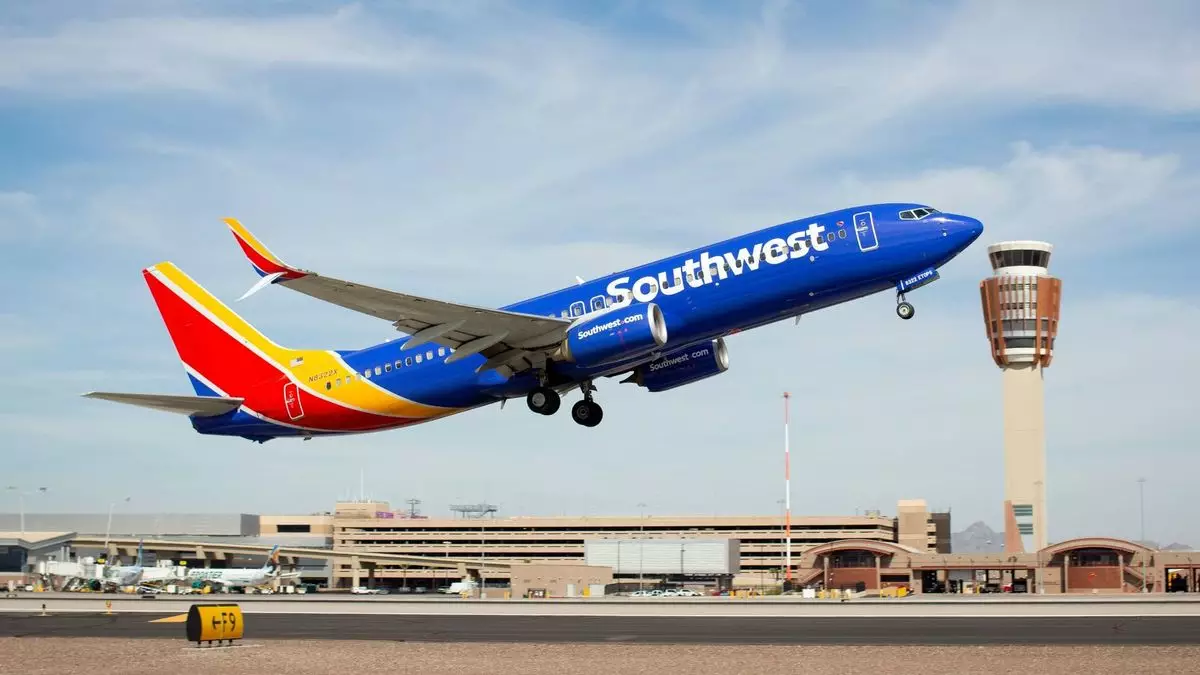In a remarkable strategic shift, Southwest Airlines has made its long-awaited debut into the realm of red-eye flights, a significant evolution for the airline that has traditionally been known for its daytime operations. On a Thursday night, the first batch of five overnight flights launched from major West Coast hubs — Las Vegas, Los Angeles, and Phoenix — embarking on journeys that highlight a new connectivity to destinations east of the Mississippi River. The airline celebrated this milestone with complimentary gift bags and commemorative cards for the passengers onboard, marking the occasion as a pivotal step in its operational transformation.
Currently, Southwest Airlines is rolling out five daily red-eye routes primarily connecting Las Vegas with Baltimore and Orlando, Los Angeles with Baltimore and Nashville, and Phoenix with Baltimore. However, this is merely the beginning: by the summer, the airline plans to expand its offerings to a total of 33 overnight flights each day. This significant increase is more than just a numbers game; it’s a calculated response to heightened demand for flexible travel options, especially as customer expectations continue to evolve post-pandemic.
The introduction of red-eye flights isn’t merely a marketing gimmick; it’s a response to Southwest’s need to enhance its financial performance, which has lagged behind competitors, such as Delta and United, in the aftermath of the COVID-19 pandemic. The strategic plan to diversify offerings includes implementing assigned seating and additional legroom in 2026, alongside various cost-control strategies aimed at bolstering profitability. This red-eye initiative allows for improved aircraft utilization and the potential for increased revenue generation through a wider array of travel itineraries.
What sets Southwest Airlines’ red-eye service apart is its potential to enhance connectivity for customers. For instance, the carrier anticipates that the introduction of overnight flights from Honolulu to Las Vegas will allow for a staggering 50% increase in travel options for passengers. This operational expansion not only meets the current demands of travelers but also paves the way for seamless connections across its extensive domestic network. Remarkably, the airline noted that almost 75% of passengers booked on red-eye flights are also scheduled to take connecting flights either prior to or following their overnight journeys.
Furthermore, the rollout of red-eye flights coincides with the beginning of Southwest’s interline agreement with Icelandair — its first such partnership in decades. Initially, these interconnected itineraries will only be available through Icelandair’s channels, with future plans to expand connectivity to include Denver and Nashville. This collaboration reflects Southwest’s broader ambition to integrate more global connections and foster an increasingly competitive market position, particularly as it prepares for the introduction of assigned seating, which may further transform the customer experience.
Southwest Airlines’ entrance into overnight flying represents a multifaceted approach to adapting its operational strategy in a competitive landscape. By valuing connectivity, customer convenience, and financial performance, the airline is poised to redefine its offerings and establish a stronger foothold in the market.

